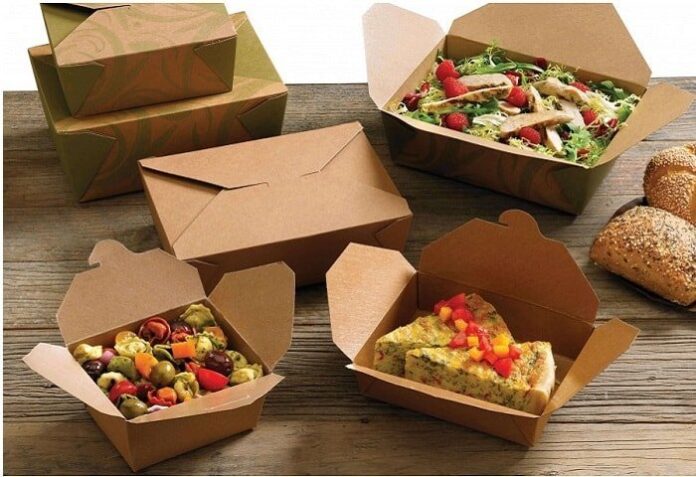Introduction
When it comes to food products, packaging serves as the face and the guardian of the goods inside. It plays a pivotal role in ensuring that the product reaches consumers safely, while also catching their attention and igniting their taste buds. The art of packaging for food products goes beyond aesthetics; it is a careful blend of form and function, marrying practicality with creative expression. In this blog, we delve into the world of food packaging, exploring its significance, design principles, sustainability considerations, and the impact it has on consumer experiences.
The Significance of Food Packaging
Packaging plays a crucial role in the food industry for several reasons:
1. Protection: The primary function of food packaging is to safeguard the product from contamination, moisture, air, and physical damage. Proper packaging ensures that the food inside remains fresh, safe, and retains its quality throughout its journey from the production facility to the consumer’s table.
2. Branding and Marketing: Packaging is a powerful marketing tool. It serves as a visual representation of the brand and its values, effectively communicating the product’s identity, quality, and uniqueness. Well-designed packaging catches the eye of potential customers and entices them to explore the product further.
3. Information and Communication: Packaging conveys essential information such as nutritional content, ingredients, allergens, expiry dates, and preparation instructions. Clear and accurate labeling builds trust with consumers and enables them to make informed choices about their purchases.
Design Principles for Food Packaging
Effective food packaging design requires a thoughtful approach that balances aesthetics and practicality. Here are some key design principles to consider:
1. Functionality: The packaging should be easy to handle, open, and reseal if necessary. It should be tailored to the specific needs of the product to maintain its integrity and freshness.
2. Visual Appeal: Eye-catching and attractive packaging draws consumers’ attention. Vibrant colors, appetizing images, and a well-defined brand logo contribute to the overall visual appeal.
3. Material Selection: Choosing appropriate materials is vital for both product preservation and environmental sustainability. Biodegradable, recyclable, and eco-friendly materials are increasingly preferred by environmentally conscious consumers.
4. Shelf Impact: Packaging should stand out on store shelves among competitors, instantly communicating the product’s unique selling points.
5. Simplicity and Clarity: A clutter-free design with clear and concise information makes it easier for consumers to understand the product and its benefits.
Sustainability in Food Packaging
In recent years, sustainability has become a significant concern in the packaging industry, including food packaging. As consumers become more environmentally aware, they demand eco-friendly solutions. Sustainable packaging practices include:
1. Eco-Friendly Materials: Manufacturers are exploring alternatives to traditional plastic packaging, such as bioplastics, compostable materials, and recycled paper.
2. Minimalism: Reducing the amount of material used in packaging helps minimize waste and energy consumption.
3. Reusability and Recyclability: Packaging that can be reused or easily recycled encourages responsible disposal and reduces the burden on landfills.
4. Source Reduction: Designing packaging to be compact and efficient without compromising on product safety or quality.
Impact on Consumer Experience
Packaging significantly influences the overall consumer experience. It creates the crucial first impression, which can sway a potential buyer’s decision. Here are some ways packaging impacts consumer experience:
1. Perception of Quality: Premium and well-designed packaging can enhance the perceived quality of the product, even before the consumer tastes it.
2. User-Friendly Packaging: Easy-to-use and resealable packaging contributes to convenience, increasing the likelihood of repeat purchases.
3. Emotional Connection: Thoughtful and visually appealing packaging can evoke emotions and memories, fostering a connection between the consumer and the product.
4. Transparency and Trust: Clear information and transparent packaging build trust with consumers who appreciate knowing what they are buying.
“Taste the Difference, savor the Experience – Unwrap our Deliciously Sustainable Packaging For Food Products Today!”
Conclusion
Packaging for food products is an artful fusion of aesthetics, practicality, and sustainability. Its significance goes beyond preserving and presenting the product; it shapes consumer perceptions, influences purchasing decisions, and contributes to the overall brand image. Striking the right balance between functionality, design, and environmental responsibility ensures that food packaging continues to delight consumers while preserving our planet for generations to come. As consumers, choosing products with sustainable packaging can encourage businesses to adopt more eco-friendly practices, making it a collective responsibility to foster positive change in the packaging industry.








